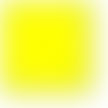SVG Blur Effects
<defs> and <filter>
All internet SVG filters are defined within a <defs> element. The <defs> element is short for definitions and contains definition of special elements (such as filters).
The <filter> element is used to define an SVG filter. The <filter> element has a required id attribute which identifies the filter. The graphic then points to the filter to use.
SVG <feGaussianBlur>
Example 1
The <feGaussianBlur> element is used to create blur effects:

Here is the SVG code:
Example
<svg height="110" width="110">
<defs>
<filter id="f1" x="0" y="0">
<feGaussianBlur in="SourceGraphic" stdDeviation="15"
/>
</filter>
</defs>
<rect width="90" height="90" stroke="green" stroke-width="3"
fill="yellow" filter="url(#f1)" />
</svg>
Try it Yourself »
Code explanation:
- The id attribute of the <filter> element defines a unique name for the filter
- The blur effect is defined with the <feGaussianBlur> element
- The in="SourceGraphic" part defines that the effect is created for the entire element
- The stdDeviation attribute defines the amount of the blur
- The filter attribute of the <rect> element links the element to the "f1" filter

